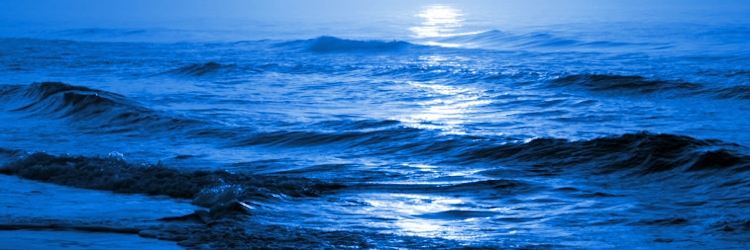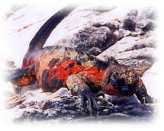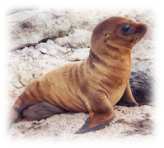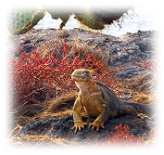Galapagos
Discover the Diversity

Author
Laura Rose, Virginia Sea Grant, Virginia Institute of Marine Science
Grade Level
8-12
Lesson Time
1.5-2 hrs.
Objectives
- Recognize Darwin's concept of natural selection, and the role of the Galapagos in Darwin's research.
- Explain the importance of the Galapagos Islands in relation to endemism.
- Create a research journal based on the discovery of a Galapagos fish species.
- Interpret the impacts of the Galapagos current and climate system on the distribution of species.
Biological richness, Diversity, Endemic, Natural Selection, Biogeography
Materials Required
paper, printer
Summary
Using data from FishBase, explore the various fish species that exist in the Galapagos Islands. Introduction
The Galapagos Islands, a province of the Republic of Ecuador and lying in the Pacific about 1000 km off its coast, evoke feelings of biological richness and mystery. The diversity of species found there and the evolutionary lessons learned from them make the islands a place of particular intrigue to many. As a preview to a trip you might take there yourself, the IMAX film, "Galapagos", allows you such a close look that you are virtually transported to one of the most unique environments on Earth or you can take a tour with the NSTA Galapagos Guide.
The land comprising the Galapagos Islands is almost entirely National Park land (97%), and the Galapagos Marine Resources Reserve was established to protect the waters of the archipelago. The flora and fauna are dazzling, and many species found there are endemic, meaning that they are only found there. Charles Darwin was intrigued by the fact that some species had evolved into many distinct forms on different islands. For example, there are 14 different species of giant tortoise and 13 different species of small, brownish finches. They are all adapted to a range of different foods. This observation led Charles Darwin to propose the concept of evolution by natural selection, an extremely important part of the history of science.



 Photos: Terri Kirby Hathaway
|
The Galapagos marine environment is fascinating. Two ocean currents are responsible for two groups of marine species in Galapagos, warm equatorial water species and colder water species. Which region of the islands is warmer: the North or the West? What types of marine species are found in each area? The islands are the home of the only penguin living on the Equator. Seabirds and marine iguanas also make their home there, as do sea lions, fur seals, whales, dolphins, and sea turtles. In addition, over 400 species of fish have been catalogued from the rich ocean waters surrounding the islands.
The researchers involved in the filming of the IMAX movie may even add a few more species to the list. Although the movie was created for entertainment purposes, scientific studies were being conducted in the process. The researchers may have identified more than a dozen previously unknown marine species during their 14 weeks on the islands!
Data Activity
Pretend you're an explorer (either in Darwin's days or modern days) documenting a newly discovered fish species. Using the FishBase Database's list of marine/brackish fishes of the Galapagos Islands, choose a fish (everyone should pick a different fish), research it, and present it.
Exhibit a picture of your fish for the class, along with your journal entry documenting its discovery. Describe the fish's characteristics (i.e. size, color, features), habitat, distribution, behavior, and any other interesting information you have gathered from your observations. In a group discussion, consider how many years of observation, comparison, and documentation are required to gain an understanding of the natural history of an area. As a class, answer the following:
Discussion Questions:
How many of the fish were endemic to the Galapagos? (Hint: look in the Distribution and Status categories on the fish data page).
How do the endemic fish differ (give examples of characteristics)?
How does the current and climate system of the Galapagos affect the distribution of your fish? (Hint: look at the Environment and Climate categories).
Learn more about the research taking place on the islands from the Charles Darwin Foundation web site.